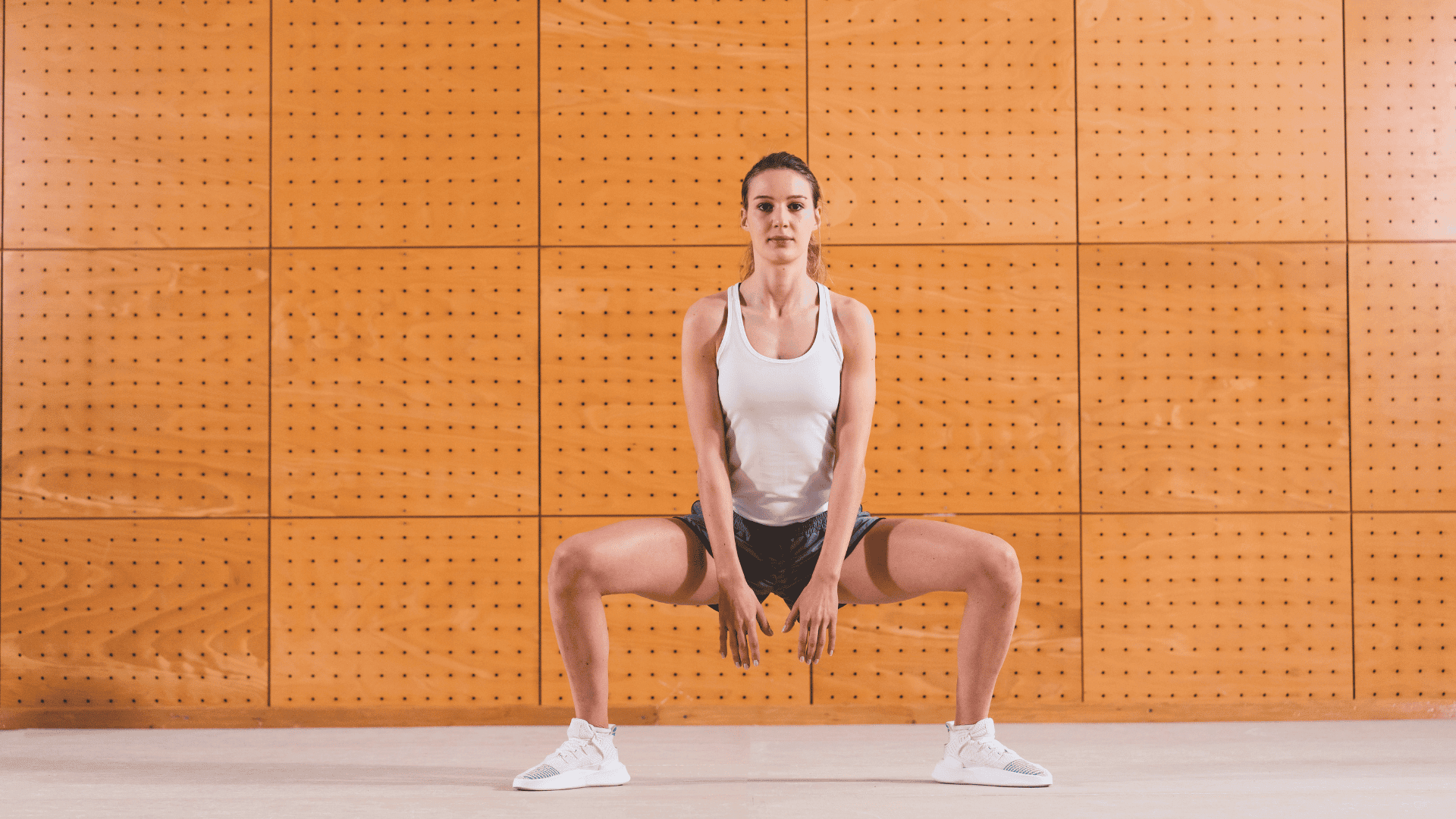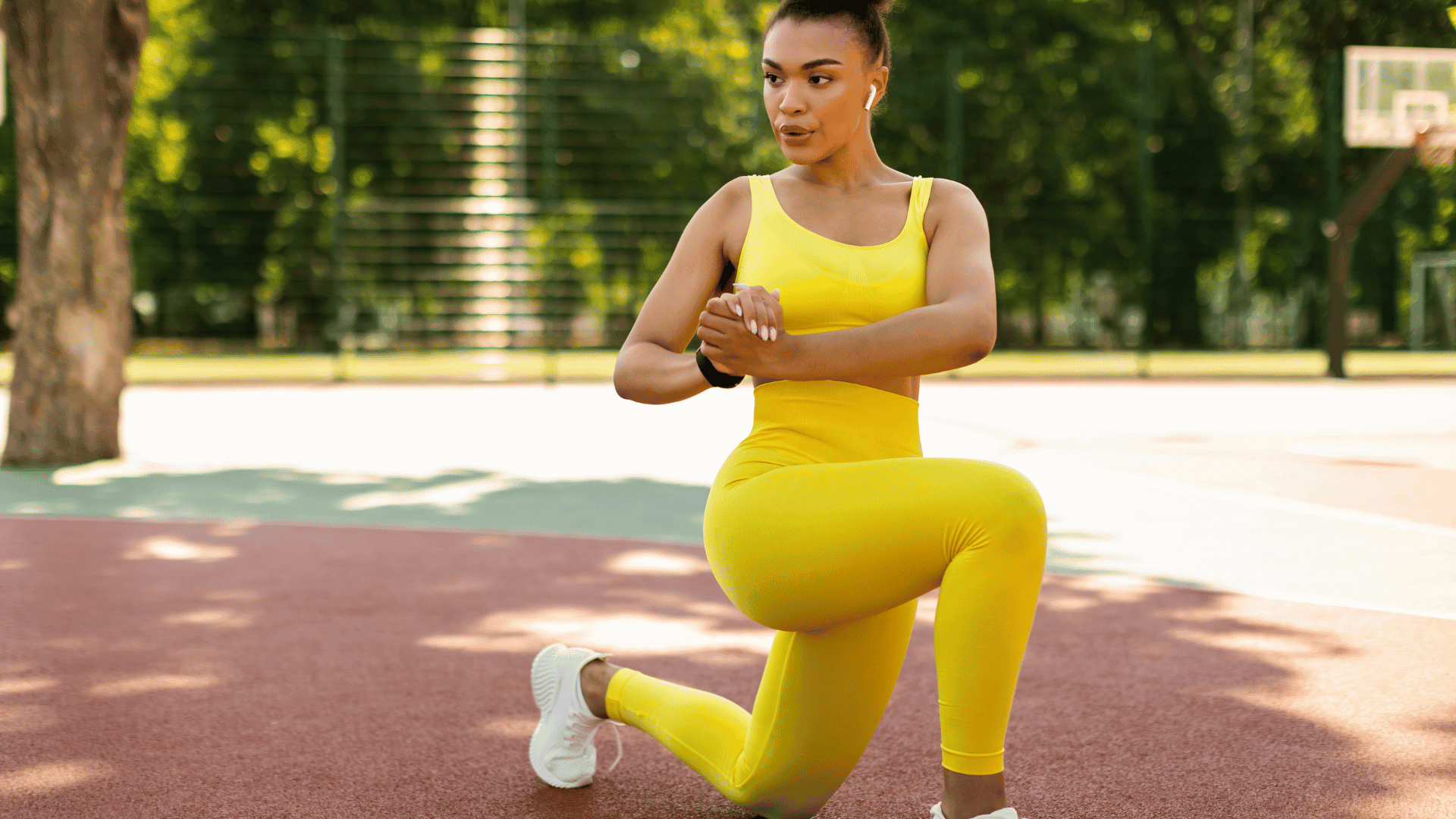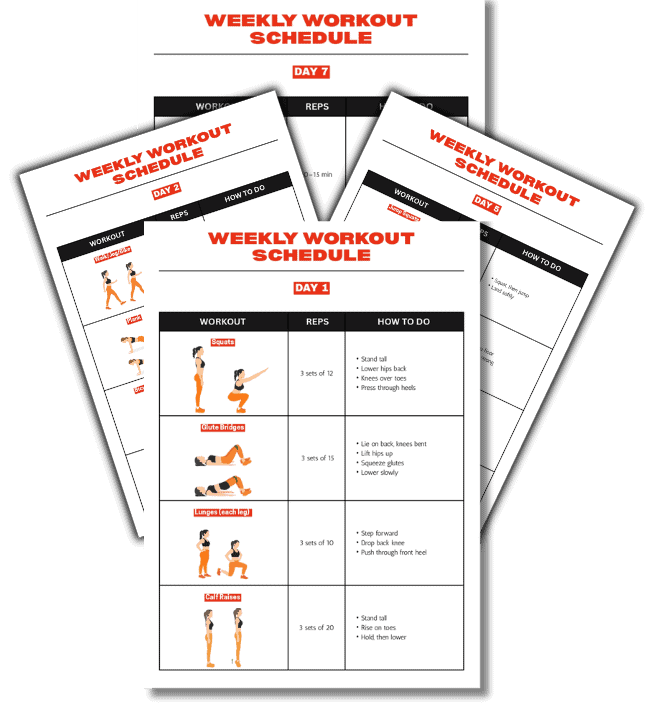When it comes to leg workouts, the inner thighs often get left out.
These muscles, called the adductors, are responsible for pulling your legs together and keeping your hips stable.
If they’re weak, your knees and hips take on extra strain, which can affect everything from walking to workouts.
Strong inner thighs do more than shape your legs. They improve balance, support everyday movement, and help prevent common injuries like groin pulls or knee pain.
In this guide, you’ll find 7 inner thigh workout moves that are beginner-friendly, effective, and easy to fit into a short routine.
Why Your Inner Thighs Deserve More Attention

When most people think about leg workouts, they picture squats or lunges. But the inner thighs, the muscles that pull your legs together and steady your hips, often get ignored. These muscles, called the adductors, play a much bigger role than just shaping your legs.
Stronger inner thighs help your body stay balanced. They support your hips, protect your knees, and give you more control in every step you take.
This stability carries over into daily life, whether you’re chasing your kids, going for a run, or moving side to side in a workout class.
Training in this area also adds a tone where many women want to feel firmer. And when your inner thighs are stronger, the rest of your lower body works better too.
That means fewer aches, more confidence in movement, and a body that feels capable instead of shaky.
For those who are always busy, the payoff is simple: a few targeted moves can build strength, improve stability, and give you results you can feel and see.
7 Inner Thigh Workout Moves That You Can Easily Do
Your inner thighs don’t need complicated machines to get stronger. With simple exercises, you can target these muscles using just your bodyweight, a band, or everyday items like a pillow or backpack.
The following moves are beginner-friendly but can easily be scaled up if you want more challenge.
1. Wide Stance Squats (Sumo Squats)

This is one of the most effective moves for your inner thighs.
- Start position: Stand with your feet wider than shoulder-width apart. Point your toes out at about a 45° angle.
- Movement: Brace your core and push your hips back as if sitting in a chair. Bend your knees and lower until your thighs are close to parallel with the floor.
- Return: Press through your heels to rise back up, keeping your chest tall and back straight.
Why it works: The wide stance makes your inner thighs work harder than in a regular squat.
Beginner tip: Use just your bodyweight until you master the form.
Progression: Hold a dumbbell, kettlebell, or even a backpack at your chest.
2. Lateral Lunges (Side Lunges)

After squats, side lunges add movement in a new direction, which really challenges your thighs and hips.
- Start position: Stand tall with feet together.
- Movement: Step your right foot out wide. Bend your right knee while keeping your left leg straight. Your hips shift back as you lower.
- Return: Push off your right heel to bring yourself back to the center. Switch to the left side for the next rep.
Why it works: Strengthens and stretches your inner thighs while improving hip mobility.
Beginner tip: Start with small steps and a shallow bend.
Progression: Hold a weight at chest height to increase resistance.
3. Curtsy Lunges

Now that you’ve worked side to side, the curtsy lunge hits your legs at an angle, adding variety.
- Start position: Stand with feet hip-width apart.
- Movement: Step your right leg back and across behind your left leg, as if performing a “curtsy.” Bend both knees to lower into a lunge.
- Return: Push through your front heel to come back to standing. Alternate sides.
Why it works: Targets inner thighs and glutes from a different angle than traditional lunges.
Beginner tip: Hold onto a chair or wall for balance.
Progression: Add dumbbells at your sides to make it more challenging.
4. Side-Lying Leg Lifts

This simple floor move isolates your inner thighs, giving you a focused burn.
- Start position: Lie on your side with both legs straight. Cross your top leg over and place that foot on the floor in front of your bottom leg.
- Movement: Keep your bottom leg straight and slowly lift it upward. Lower back down with control.
- Return: Repeat for all reps, then switch sides.
Why it works: Directly works the inner thigh without involving other large muscles.
Beginner tip: Keep it bodyweight only at first.
Progression: Add an ankle weight or wrap a resistance band around your ankles.
5. Sliding Side Lunges (Adductor Slides)

This move takes the side lunge further by keeping tension on your inner thighs the whole time.
- Start position: Stand with feet hip-width apart. Place one foot on a small towel (if you’re on hardwood) or a paper plate (if you’re on carpet).
- Movement: Slide that foot out to the side while bending your other knee. Lower into a squat on one side.
- Return: Use your inner thigh to pull the sliding foot back in.
Why it works: Constant sliding motion keeps your adductors engaged for strength and stability.
Beginner tip: If sliding feels unsteady, stick with regular step-out lunges.
Progression: Hold a weight at chest level while performing the slide.
6. Wall Sit with Pillow or Ball Squeeze
This static exercise makes your muscles work in a different way—by holding tension.
- Start position: Lean your back against a wall and slide down until your knees are bent at about 90 degrees, like you’re sitting in an invisible chair.
- Movement: Place a pillow or ball between your knees. Squeeze it gently while holding the wall sit.
- Return: Keep squeezing for time, then relax and stand back up.
Why it works: Combines a wall sit with a squeeze, forcing your inner thighs to stay engaged the entire time.
Beginner tip: Start with a soft pillow for comfort.
Progression: Use a firmer ball or hold the sit for longer periods.
7. Glute Bridge with Pillow Squeeze
This final move works your glutes and inner thighs together for full lower-body strength.
- Start position: Lie on your back with knees bent and feet flat on the floor. Place a pillow or ball between your knees.
- Movement: Press through your heels to lift your hips up. As you hold the bridge, squeeze the pillow or ball. Lower your hips with control and repeat.
- Return: Focus on both the lift and the squeeze for each rep.
Why it works: Pairs glute activation with inner thigh engagement for balanced results.
Beginner tip: Use just your bodyweight.
Progression: Add a dumbbell or weight plate across your hips for resistance.
A Quick 20-Minute Inner Thigh Routine

You don’t need hours in the gym to work your inner thighs. With this 20-minute circuit, you’ll strengthen, tone, and support your hips and knees, all with simple, efficient moves.
| Part | Exercise | Reps/Time | Notes |
| Warm-Up | Leg swings (front + side), hip circles | 3 minutes | Loosen hips and prep muscles |
| Circuit | Sumo squats | 12 reps | Wide stance, focus on inner thighs |
| Side lunges (each side) | 10 reps per side | Step wide, push through heel | |
| Side-lying leg lifts (each side) | 15 reps per side | Controlled lifts, no rushing | |
| Curtsy lunges (each side) | 12 reps per side | Step back and across, chest tall | |
| Wall sit with pillow squeeze | 30 seconds | Hold and squeeze gently | |
| Repeat | Circuit | 2–3 rounds total | Rest 30–60 sec between rounds |
| Cooldown | Inner thigh stretch (butterfly, wide fold) | 2–3 minutes | Release tension and improve mobility |
Mistakes That Can Hold Back Your Inner Thigh Progress

Good form makes all the difference in an inner thigh workout. If your technique slips, you won’t get the results you want, and you could even put extra stress on your joints.
Here are the most common mistakes to watch out for and how to fix them.
Knees Collapsing Inward
This usually happens during squats or lunges. When your knees cave toward each other, your inner thighs stop working the way they should, and your knees take on extra strain.
Fix it: Focus on pressing your knees outward so they stay in line with your toes. A good cue is to imagine “spreading the floor apart” with your feet.
Using Momentum Instead of Control
Kicking your leg up quickly or bouncing through reps might feel easier, but it takes tension away from the muscles.
Fix it: Slow down. Keep movements steady and controlled, especially during side-lying leg lifts or sliding lunges. You should feel the muscle working, not just your body moving.
Skipping Warm-Up or Cooldown
Jumping straight into a workout without prepping your body can make muscles stiff and more prone to strain. The same goes for skipping cooldown, your legs will feel tighter and recovery takes longer.
Fix it: Always take a few minutes to warm up your hips and thighs before starting, and stretch gently afterward. Even three minutes each way makes a big difference.
Overreaching Range of Motion
Trying to go too deep in lunges or forcing a stretch can pull on your muscles in the wrong way.
Fix it: Stay within a range you can control with good form. Over time, as your hips get more mobile, you’ll naturally be able to go deeper without strain.
Adding Resistance Too Soon
Weights, bands, or ankle straps can help, but using them before your form is solid makes the exercise less effective and raises your risk of injury.
Fix it: Master bodyweight versions first. Once you can do 2–3 rounds of clean reps, then add resistance little by little.
Simple Ways to Make Your Inner Thigh Workouts More Effective

Once your form is solid, a few small tweaks can help you see faster progress. These tips will keep your workouts safe, balanced, and efficient so you get the most from every rep.
Prioritize Slow, Controlled Reps
Rushing through moves might feel easier, but it takes the work away from your muscles.
How to apply it: Lower and lift with control, especially in side-lying leg lifts or curtsy lunges. Aim to feel the muscle working the whole time.
Mix Compound and Isolation Moves
Your inner thighs benefit from both big, multi-muscle moves and smaller, targeted ones.
How to apply it: Combine exercises like sumo squats or side lunges (compound) with moves like leg lifts or squeezes (isolation). Together, they create balanced strength.
Add Resistance Gradually
Extra challenge is good, but only when you’re ready for it.
How to apply it: Once bodyweight feels easy, add a band, light dumbbells, or increase your hold time. Make small changes instead of jumping to heavy weights too soon.
Train Consistently 2–3 Times Per Week
Inner thighs need regular attention, just like any other muscle group.
How to apply it: Slot these exercises into your weekly routine two or three times. Short, steady sessions beat random, long ones when it comes to results.
Pair Workouts With Balanced Nutrition
Exercise alone won’t shape your legs the way you want if your nutrition is off.
How to apply it: Focus on whole foods, enough protein, and staying hydrated. Combined with training, this helps with muscle tone and recovery.
Strong Legs, Steady Core, More Confidence
Your inner thighs do more than shape your legs, they keep your body steady and supported. When these muscles are strong, you move with better balance, protect your joints, and feel more in control during workouts and daily life.
The best part is how simple the work can be. These seven moves require little or no equipment, but they pack a big impact. With consistency, they’ll build tone, stability, and strength you can see and feel.
Start with bodyweight versions, focus on form, and add resistance when you’re ready. Step by step, your inner thighs will grow stronger, your legs will feel steadier, and your confidence will carry into everything you do.
Your Weekly Plan, Done for You

Strong legs don’t just come from one workout, they come from showing up week after week. But between work, family, and everything else on your plate, it’s easy to skip or feel unsure about what to do next. That’s where a plan makes all the difference.
The Weekly Workout Schedule is a free guide built to help you stay on track. It lays out exactly what to do each day, so you don’t waste time deciding or second-guessing.
Just follow the plan, check off your sessions, and feel the progress build.
Consistency gets easier when the plan is already done for you. Start today and see how much smoother your week feels when your workouts fit right in.
Frequently Asked Questions
1. What is the best exercise for inner thighs?
There isn’t just one. The best results come from mixing compound moves like sumo squats and lunges with isolation moves like side-lying leg lifts or squeezes. Together, they target your inner thighs from different angles.
2. Can I slim my inner thighs with these workouts?
These exercises will strengthen and tone your inner thighs. For fat loss, you’ll also need a mix of regular workouts, healthy eating, and consistency. Exercise shapes the muscles, while nutrition helps reduce fat around them.
3. How often should I do inner thigh workouts?
Two to three times per week is ideal. This gives your muscles enough work to get stronger while also allowing time to recover. You can do a full inner thigh routine or just add a couple of these moves into your regular leg days.
4. Do I need equipment for inner thigh workouts?
No. Most moves can be done with just your bodyweight. If you want more challenge, you can use simple tools like a resistance band, a pillow, or household items like a backpack or water jug.
5. How long until I see results in my inner thighs?
It depends on your starting point and consistency. Many people notice more firmness and strength within 4–6 weeks of regular training. Visible changes, like more tone, usually take a bit longer and also depend on your overall routine and nutrition.










